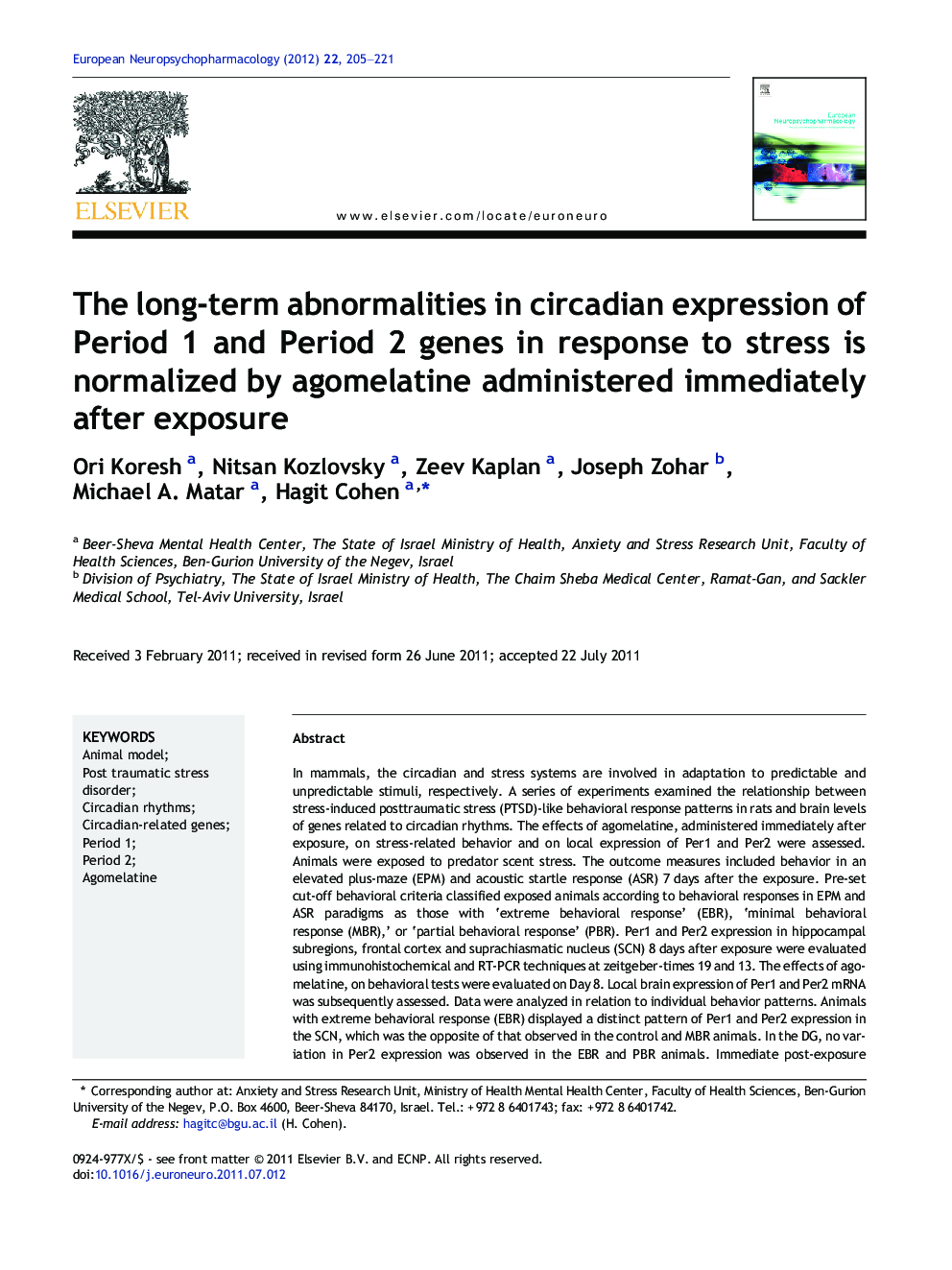| Article ID | Journal | Published Year | Pages | File Type |
|---|---|---|---|---|
| 320562 | European Neuropsychopharmacology | 2012 | 17 Pages |
In mammals, the circadian and stress systems are involved in adaptation to predictable and unpredictable stimuli, respectively. A series of experiments examined the relationship between stress-induced posttraumatic stress (PTSD)-like behavioral response patterns in rats and brain levels of genes related to circadian rhythms. The effects of agomelatine, administered immediately after exposure, on stress-related behavior and on local expression of Per1 and Per2 were assessed. Animals were exposed to predator scent stress. The outcome measures included behavior in an elevated plus-maze (EPM) and acoustic startle response (ASR) 7 days after the exposure. Pre-set cut-off behavioral criteria classified exposed animals according to behavioral responses in EPM and ASR paradigms as those with ‘extreme behavioral response’ (EBR), ‘minimal behavioral response (MBR),’ or ‘partial behavioral response’ (PBR). Per1 and Per2 expression in hippocampal subregions, frontal cortex and suprachiasmatic nucleus (SCN) 8 days after exposure were evaluated using immunohistochemical and RT-PCR techniques at zeitgeber-times 19 and 13. The effects of agomelatine, on behavioral tests were evaluated on Day 8. Local brain expression of Per1 and Per2 mRNA was subsequently assessed. Data were analyzed in relation to individual behavior patterns. Animals with extreme behavioral response (EBR) displayed a distinct pattern of Per1 and Per2 expression in the SCN, which was the opposite of that observed in the control and MBR animals. In the DG, no variation in Per2 expression was observed in the EBR and PBR animals. Immediate post-exposure treatment with agomelatine significantly reduced percentage of extreme-responders and normalized the expression of Per1 and Per2 as compared to controls. Stress-induced alterations in Per genes in the EBR animals may represent an imbalance between normally precisely orchestrated physiological and behavioral processes and psychopathological processes. These findings indicate that these circadian-related genes play a role in the neurobiological response to predator scent stress and provide supportive evidence that the use of agomelatine immediately after traumatic experience may be protective against the subsequent development of PTSD.
